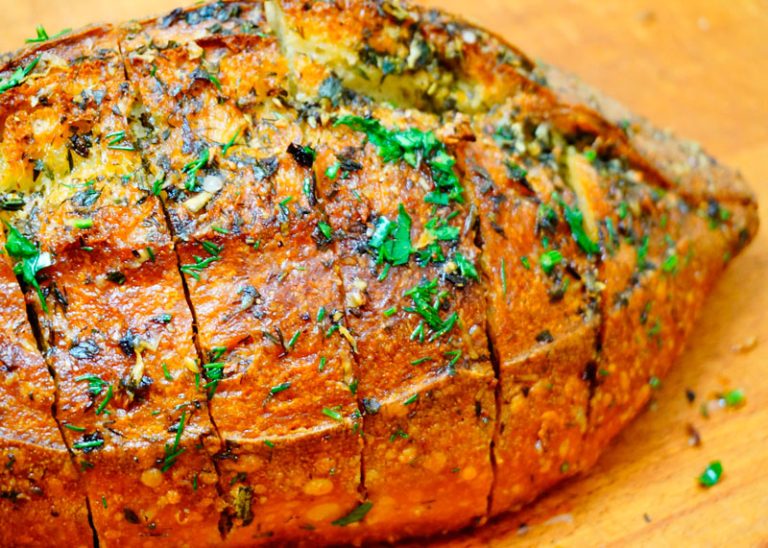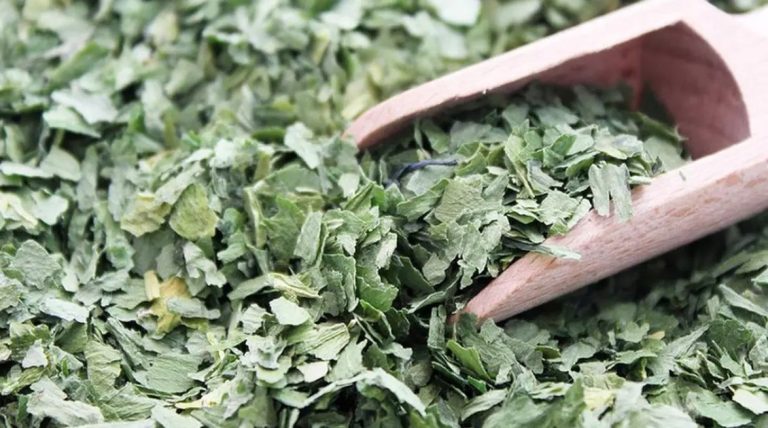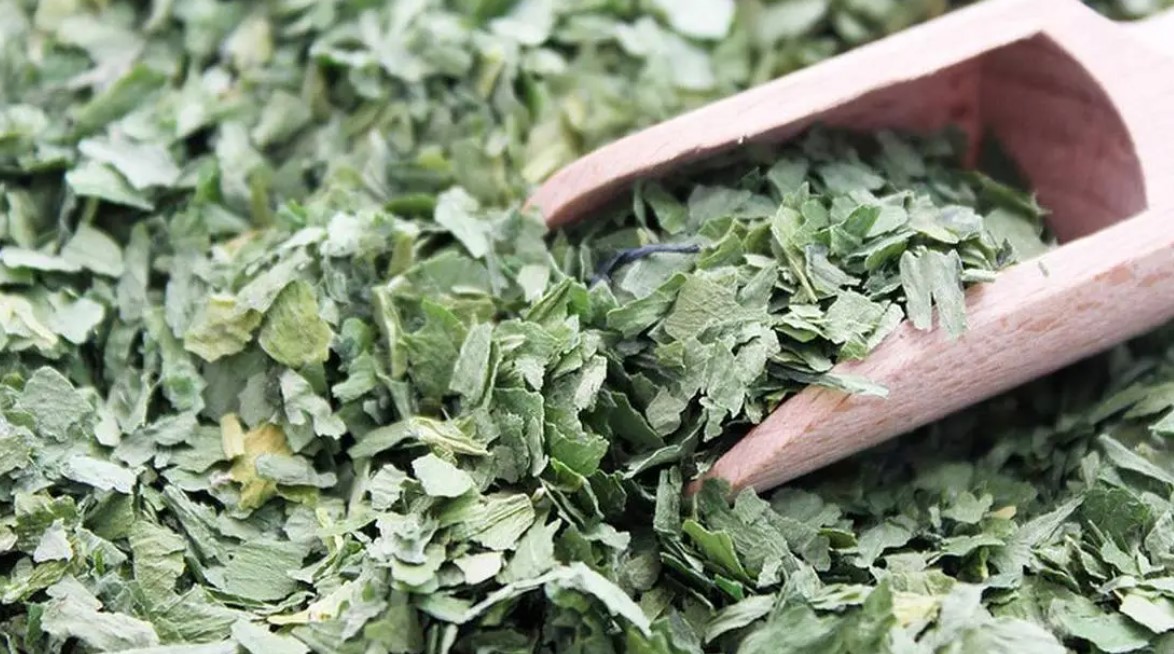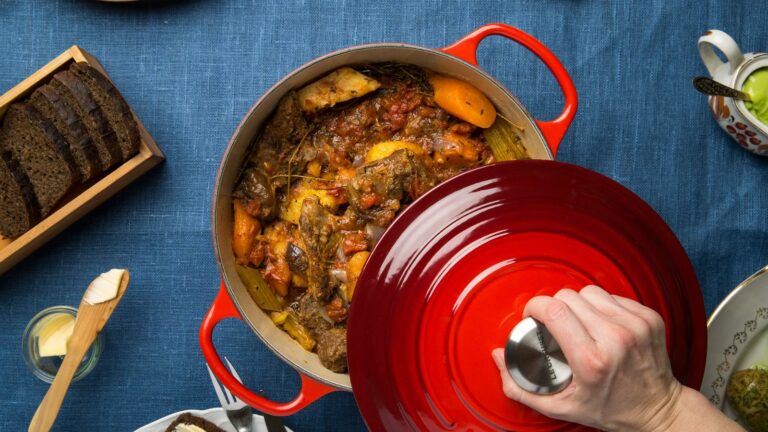Baking wild garlic bread yourself is easy with this vegan recipe, even as a baking beginner:in. You can pick the spicy herb yourself in many parks and forests during the wild garlic season.
The vegan wild garlic bread with spelled flour not only tastes good for dinner, but is also an excellent accompaniment to a cream soup. The recipe is not very complex, but needs a bit more preparation time due to the rising time.
Wild garlic bread: recipe and preparation

Ingredients:
0.5 cubes of fresh yeast
150 ml lukewarm water
500 g spelled flour (type 630)
10 g salt
5 gsugar
150 ml oat drink
2 tbsp olive oil
50 g fresh wild garlic leaves
Directions:
Dissolve the yeast in the lukewarm water.
Put the spelled flour in a mixing bowl and add the salt and sugar.
Pour in the yeast water, the oat drink and the olive oil and mix all the ingredients together well.
Knead the dough with the dough hook of a food processor or a hand mixer until it gets a smooth and silky surface. This can take ten to 15 minutes. The longer you knead, the nicer the structure of your wild garlic bread will be later. Tip: If you don’t have a food processor, you can also knead the yeast dough by hand. You should take at least 15 minutes to do this.
Cover and let the ball of dough rest in a warm place for about 60 minutes. During this time, its volume should double.
Towards the end of the resting time, wash the wild garlic leaves and chop them roughly.
Knead the bread dough thoroughly with the chopped wild garlic and divide the dough into four parts.
Shape each of the pieces into a roll 10 to 12 inches long. Twist two rolls of dough together and place them on a baking sheet greased with olive oil.
Bake the two wild garlic breads in the oven at 220 degrees Celsius top and bottom heat for 20 to 30 minutes until light brown.
Allow the wild garlic bread to cool before serving.
Wild garlic bread: tips for preparation
With just a few changes, you can easily vary the recipe for wild garlic bread:
If you use dry yeast, you need a whole packet for the wild garlic bread.
As an alternative to the simple twisted braid, you can also bake the wild garlic bread in a greased and floured loaf tin.
Finally, knead a handful of sunflower seeds into the dough, then the wild garlic bread has a bit more bite.
Sprinkle the wild garlic bread with sesame seeds before baking. Not only does it look pretty, it also tastes delicious.
For a Mediterranean flavor, chop a handful of sun-dried tomatoes and mix them into the batter.
Depending on the season, you can use other herbs instead of wild garlic, e.g. rocket, basil or herb mixtures.
Use up your bread as quickly as possible – it tastes best fresh!
Tip: Your freshly baked wild garlic bread tastes best if you spread it with homemade wild garlic butter.
Ingredients for your wild garlic bread
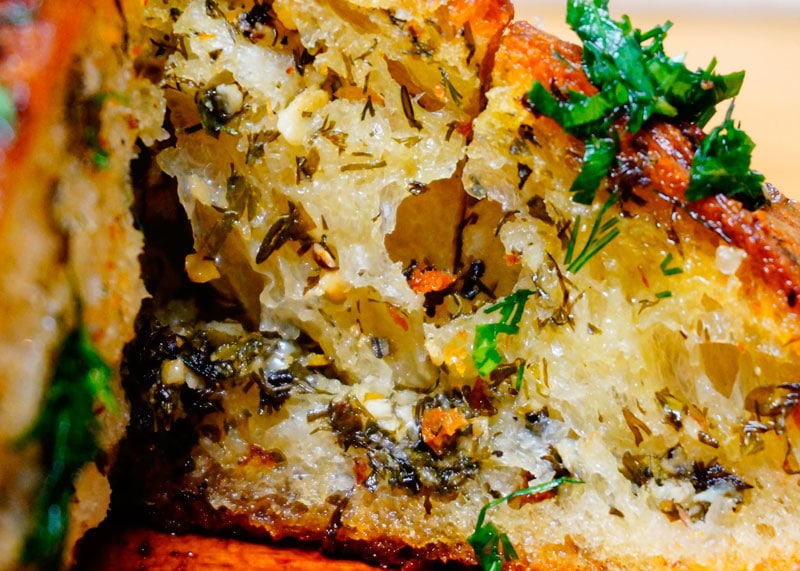
Depending on the region, the wild garlic season in Germany begins in early to mid-March. Wild garlic is one of the most popular wild herbs in local cuisine. The leaves contain valuable essential oils, as well as vitamin C and minerals such as iron, manganese and magnesium.
It is best to harvest wild garlic yourself and process it fresh. Wild garlic wilts quickly and tends to mold, which is why you rarely find it in the supermarket. Alternatively, you can buy it at the farmer’s market or from regional direct suppliers.
Use organic spelled flour for the wild garlic bread: It is free of pesticides and you support ecologically sustainable agriculture. Also pay attention to regional cultivation: products from the region have shorter transport routes and are therefore better for the climate.
Tip: Wild garlic bread can also be frozen well. It’s best to freeze it in slices, then you can thaw them individually in the toaster or on the grill and roast them until crispy.

